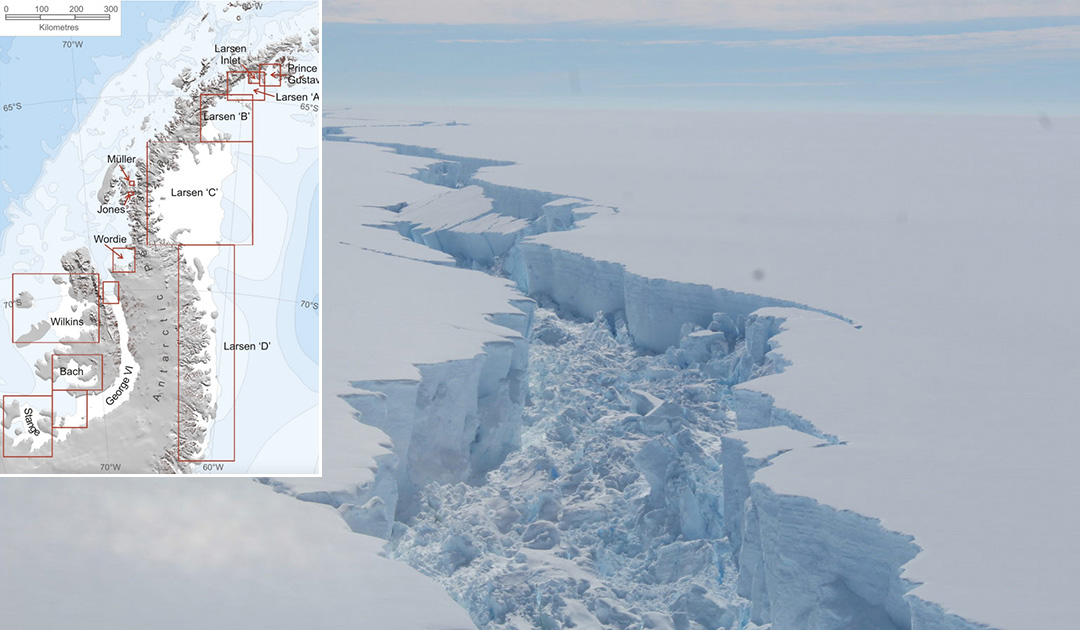
The Larsen-C Ice Shelf is the largest remaining ice shelf on the Antarctic Peninsula, from which the mega iceberg A-68 broke off in July 2017. Rising temperatures due to climate change continue to erode it, and scientists fear the ice shelf could collapse. To better understand the processes surrounding Larsen-C, scientists from the British Antarctic Survey identified the factors responsible for melting the ice shelf by severity in a new study. The study was published in the Journal of Geophysical Research: Atmospheres.
Earlier studies attributed the collapse of the much smaller neighboring Larsen-A (1995) and Larsen-B (2002) ice shelves to atmospheric processes. Therefore, the British Antarctic Survey researchers also focused on atmospheric conditions in the current study. Using computer models based on direct observations of the Antarctic Peninsula, they simulated for the first time the patterns of surface melt on Larsen-C under different atmospheric conditions over a period of two decades. They were also able to determine which of these conditions was most important.
Their results show that the primary cause of surface melting during the summer months (December, January and February), when 90% of the melting occurs, is currently solar radiation. The scientists identified warm, dry winds, so-called foehn winds, especially from March to May, and cloud characteristics as the second and third most important influencing factors. Other crucial factors are large-scale weather patterns, such as the Antarctic Oscillation (also called Southern Annular Mode, SAM) or El Niño Southern Oscillation (ENSO).

“We should all care about ice shelves because their loss affects us all. When ice shelves collapse it’s like pulling the cork out of a bottle. The glaciers that were previously held back can flow unrestrained into the ocean, adding to global sea levels. If we know what’s making the ice shelf melt now, we can predict the future better, and ultimately that will help us prepare and adapt to future change,” says Dr Ella Gilbert, a regional climate modeler at the British Antarctic Survey and lead author of the study.
As climate change continues and temperatures rise, atmospheric conditions that allow melting will occur more frequently. Therefore, it is critical to find out which patterns of ice shelf melt are most important to better predict the future of Larsen-C and make plans to mitigate the effects of climate change.
Julia Hager, PolarJournal
More about this topic





